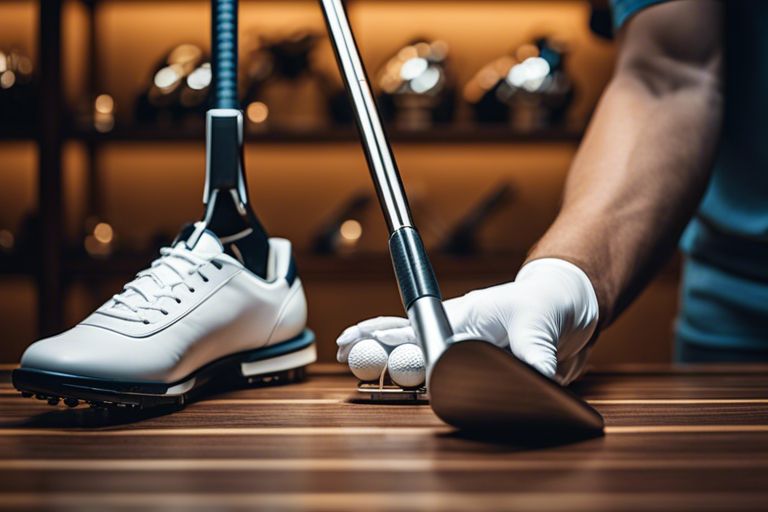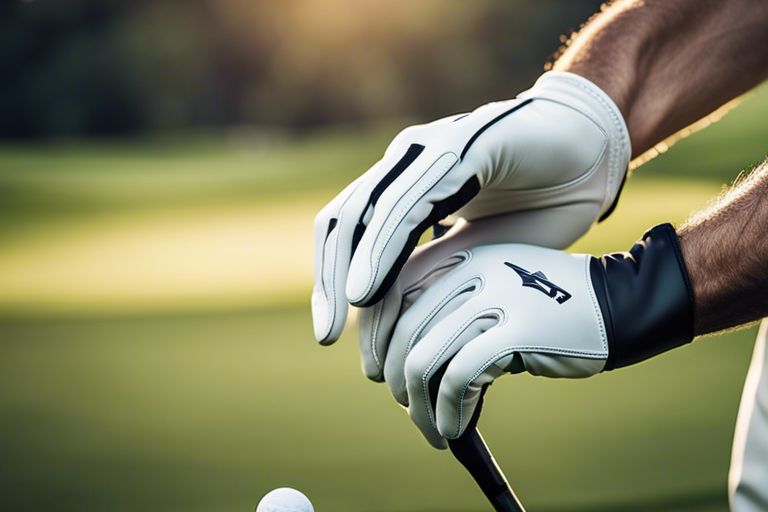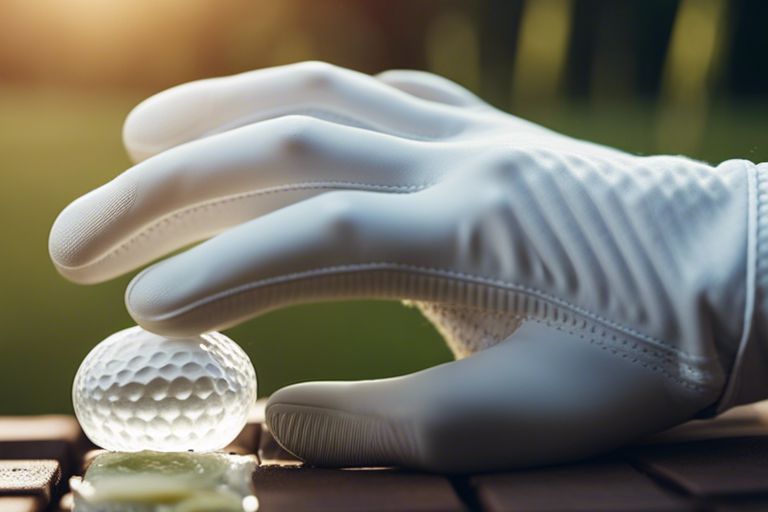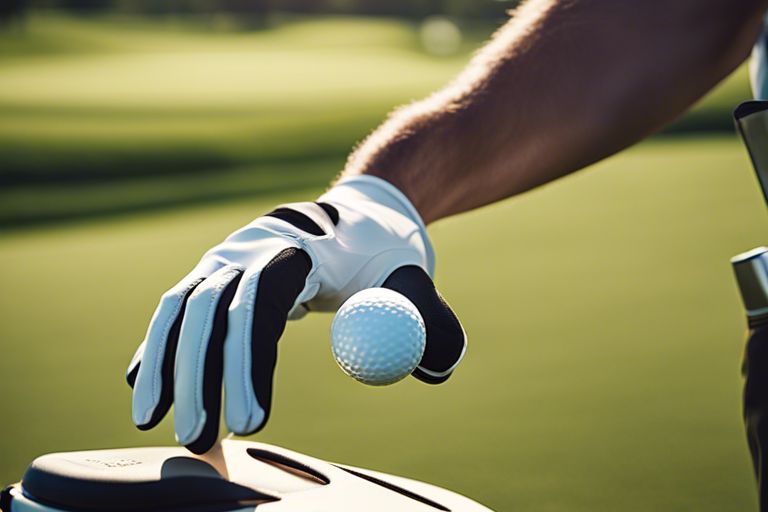You may be wondering if your golf clubs are the right fit for you. By measuring yourself properly, you can ensure that you have clubs that suit your height and swing. This guide will walk you through the steps to accurately measure for golf clubs, so you can enhance your game and play with confidence.
Key Takeaways:
- Proper measurement is crucial: Getting the right measurements for your golf clubs is important in order to improve your performance on the course.
- Consider different factors: When measuring for golf clubs, consider factors such as height, wrist-to-floor distance, and swing speed to ensure an accurate fit.
- Consult with a professional: If you’re unsure about how to measure for golf clubs, it’s always best to consult with a professional club fitter who can provide expert advice and guidance.

Understanding Your Swing Style
Identifying Your Swing Type: Slicer, Hooker, or Neutral
A crucial step in measuring for golf clubs is understanding your swing type. There are generally three main types of golf swings: slicer, hooker, and neutral. A slicer tends to hit the ball with a left-to-right ball flight, while a hooker has a right-to-left ball flight. A neutral swing is more balanced and straight.
How Your Swing Style Affects Club Measurements
Understanding your swing style is necessary because it directly impacts the type of golf clubs you should be using. For example, if you tend to slice the ball, you might need clubs with a more upright lie angle to help correct your shot shape. On the other hand, if you hook the ball, you might benefit from clubs with a flatter lie angle.
It’s important to consider your swing style when getting fitted for golf clubs to ensure that your equipment complements and enhances your natural swing tendencies. A club that is well-suited to your swing style can help you achieve more consistent and accurate shots on the course.
Hooker
If you have a hooking tendency in your swing, it’s crucial to work with a knowledgeable club fitter who can recommend the right specifications for your clubs. Adjustments such as lie angle and shaft flex can make a significant difference in helping you straighten out your shots and improve your overall game.
Measuring for the Right Club Length
Little is more crucial to your golf game than having the right club length. Clubs that are too long or too short can greatly impact your performance on the course. To ensure you have the correct club length, you need to measure your arm length and wrist-to-floor distance accurately.
Tips for Measuring Your Arm Length and Wrist-to-Floor Distance
- When measuring your arm length, stand up straight with your arms hanging relaxed at your sides. Have someone measure the distance from the crease of your wrist to the floor.
- For accurate wrist-to-floor distance, stand on a flat surface with your arms hanging naturally. Measure the distance from the floor to the crease of your wrist.
Recognizing these measurements will help you determine the appropriate club length for your golf swing.
Factors to Consider: Height, Posture, and Stance
Right club length also depends on your height, posture, and stance. For instance, a taller golfer may require longer clubs to accommodate their height, while a golfer with a more upright posture may need shorter clubs. It’s important to consider these factors when selecting the right club length for you.
- When evaluating your stance, make sure you are in your normal golf stance with your feet shoulder-width apart. Your arms should be hanging naturally down.
Any variation in your height, posture, or stance can affect the club length that is best suited for you. Make sure to consider these factors when measuring for the right club length.
Determining the Correct Club Lie Angle
Not all golfers are the same, and having the correct lie angle on your clubs can make a significant difference in your game. The lie angle is the angle between the club’s shaft and the ground when the sole is flat on the turf. If the lie angle is incorrect, it can lead to off-center hits, poor direction, and inconsistent shot-making.
How to Measure Your Natural Swing Plane and Lie Angle
Your natural swing plane and body posture are key factors in determining the correct lie angle for your clubs. To measure your natural swing plane, set up to hit a ball on a lie board or impact tape. The mark that is made on the sole of the club will indicate how upright or flat your swing is. This mark will help you determine if you need a flatter or more upright lie angle on your clubs.
Adjusting for Lie Angle: Tips for Getting it Just Right
- Use a lie angle fitting chart or tool to determine the correct lie angle for your clubs based on your height and wrist-to-floor measurement.
- Get a professional club fitting to ensure that your lie angles are tailored to your swing characteristics and playing style.
Correct lie angles are crucial for consistent ball-striking and shot accuracy. Proper lie angles can help you make better contact with the ball and improve your overall ball flight. It is crucial to have the correct lie angle to maximize your golfing potential and optimize your performance on the course.
Determining the Correct Lie Angle for Your Game
- Regularly check your lie angles to ensure they are still appropriate for your swing and stance.
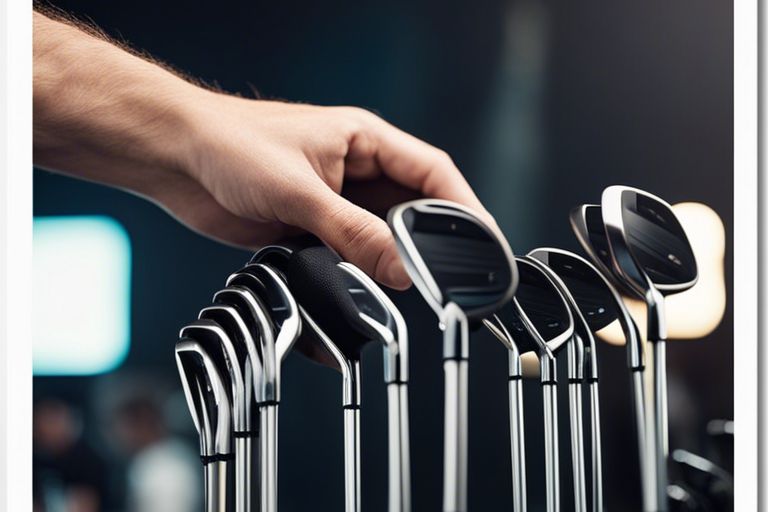
Choosing the Right Club Head Size and Style
Despite other factors like shaft and grip, selecting the right club head size and style is crucial for improving your game. The club head plays a significant role in your shot accuracy, distance, and forgiveness. When choosing the perfect club head size and style, consider various factors that can significantly impact your performance on the course.
Factors to Consider: Skill Level, Swing Speed, and Ball Flight
Skill levels vary among golfers, and it is crucial to match your club head size and style with your abilities. Beginners and high-handicap players may benefit from larger club heads that provide more forgiveness and a larger sweet spot. Advanced players with better ball-striking skills may opt for smaller club heads for better control and workability.
- Your swing speed is another crucial factor to consider when choosing the right club head size. Faster swing speeds generally benefit from smaller club heads that offer more precision and control.
- Your typical ball flight, whether high, low, fade, or draw, can also influence your choice of club head size and style. Different club head designs can help you correct your ball flight tendencies.
Assume that your swing speed and ball flight tend to influence the type of clubs that are most suitable for your game.
Tips for Selecting the Best Club Head Size and Style for Your Game
Level up your game by selecting the ideal club head size and style that matches your skill level and playing style. Your club head should complement your strengths and help improve your weaknesses on the course.
- Consider getting a club fitting session to determine the best club head size and style that suits your swing dynamics and preferences.
Thou art always better off seeking professional advice from a certified club fitter to ensure you make the right choice.

Measuring for the Perfect Grip Size
To ensure you have the best golf club grip for your game, it’s imperative to measure for the perfect grip size. A grip that is too small or too large can affect your swing and overall performance on the course. Follow these steps to measure for the ideal grip size:
How to Measure Your Hand Size and Grip Style
Any golfer can easily determine the correct grip size by measuring their hand size and considering their grip style. Begin by holding a tape measure in your palm and wrapping it around your hand at the widest part, just below your knuckles. The measurement in inches will give you an indication of the grip size that is most suitable for you. Additionally, take into account your grip style – whether it’s a strong, neutral, or weak grip – as this can also influence the ideal grip size for your clubs.
Factors to Consider: Glove Size, Finger Length, and Grip Pressure
To further refine your grip size selection, consider your glove size, finger length, and grip pressure. Your golf glove size can offer insight into the most comfortable grip size for you. Additionally, longer fingers may require a thicker grip, while shorter fingers may benefit from a thinner grip. Your grip pressure, whether light, moderate, or firm, can also impact the ideal grip size for your clubs. Remember that a grip that is too small may cause you to squeeze too tightly, leading to tension in your swing.
- Choose a grip size that matches your glove size for a comfortable fit.
- Consider the length of your fingers when selecting the thickness of the grip.
It is important to take into account all these factors when measuring for the perfect grip size to optimize your performance on the golf course. By ensuring your grip size is tailored to your hand size, style, and other individual factors, you can enhance your comfort, control, and overall playability during every round.
Considering Additional Factors
How Your Posture and Stance Affect Club Measurements
Factors such as your posture and stance play a crucial role in determining the right club measurements for you. Your posture can affect the angle of your spine, which in turn impacts the length of the club you should be using. Similarly, your stance width and position can also influence the type of club that would best suit your swing. Taking these factors into account will help you find clubs that are customized to your unique body mechanics and swing style.
The key is to ensure that your club measurements align with your posture and stance to optimize your performance on the course. Making adjustments based on these factors can help you achieve a more consistent and accurate swing, leading to better overall results.
Tips for Accounting for Age, Flexibility, and Other Physical Factors
Even factors such as age, flexibility, and other physical considerations can impact the club measurements that are right for you. As you age, your swing speed and flexibility may change, requiring adjustments to your club specifications. Additionally, your physical condition and any injuries or mobility limitations should also be taken into consideration when determining the appropriate club length, grip size, and shaft flex.
- Choose clubs with more forgiveness or flexibility in the shaft if you have limited mobility or decreased swing speed.
- Opt for lighter clubs if you have reduced strength or struggle with swinging heavier clubs.
Assume that as you age or if your physical condition changes, you may need to reassess your club measurements to ensure they continue to support your game improvement.
This
Tips for Accounting for Age, Flexibility, and Other Physical Factors
- Get regular club fittings to account for any changes in your physical abilities or swing mechanics.
- Experiment with different club configurations to find the optimal setup for your current physical condition and swing characteristics.
- Assume that your club measurements may need to be adjusted periodically to accommodate any changes in your age, flexibility, or physical condition.
Final Words
Drawing together all the steps mentioned above, you can see that measuring for golf clubs is a crucial process in ensuring that you have the right equipment to enhance your game. By measuring your height, wrist-to-floor distance, and swing speed, you can determine the appropriate club length and shaft flex that will suit your physical attributes and playing style. It is necessary to remember that having properly fitted clubs can greatly impact your performance on the course.
So, before making a purchase, take the time to measure for your golf clubs or seek assistance from a professional club fitter. Investing in custom-fit clubs that are tailored to your individual needs can ultimately lead to a more enjoyable and successful golfing experience. Be mindful of, the right clubs can make all the difference in your game, so make sure you get the perfect fit for you.
Q: Why is it important to measure for golf clubs?
A: Properly fitted golf clubs can significantly improve your swing mechanics, accuracy, and distance. Ill-fitted clubs can lead to inconsistent shots and potential injury due to poor posture.
Q: How do I measure for the correct golf club length?
A: To measure for the correct golf club length, stand up straight with your arms hanging by your sides. Have someone measure the distance from your wrist to the floor. This measurement can help determine the ideal club length for you.
Q: What other factors should be considered when measuring for golf clubs?
A: In addition to club length, factors such as your height, swing speed, and skill level should be considered when measuring for golf clubs. Custom fittings can also take into account your grip size, shaft flex, and clubhead design to further enhance your performance on the course.

